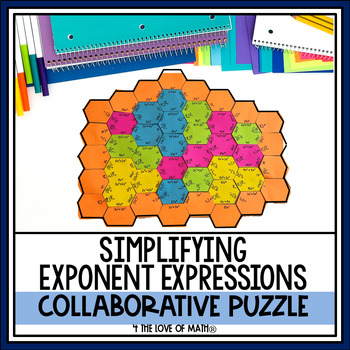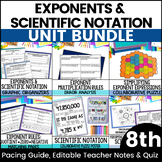Simplifying Exponent Expressions Collaborative Puzzle
- PDF
Also included in
- Make lesson planning easy with this comprehensive, approach to exponents and scientific notation with this unit bundle. These materials bolster comprehension of exponent rules, operations with scientific notation, and the applications of both in various mathematical contexts.The Bundle includes:CompPrice $15.60Original Price $23.50Save $7.90
Description
Review exponent rules with this collaborative puzzle. Each inside piece of the puzzle has 3-4 exponent expressions students must simplify. Students should understand product of powers rule, negative exponents, zero exponents, power of a product, quotient rules before beginning. Once students have simplified the expressions on their given piece (or pieces) they will join forces - whether in groups or as a whole class - to piece together the puzzle. This puzzle boosts understanding of exponent expressions while also fostering teamwork, communication, and critical thinking skills. The completed puzzle is approximately 22" x 18".
If you have any questions, comments, suggestions, etc, please email me at: randi@4theloveofmath.com
Thank you!
*****************************************************************************
You may also be interested in these activities:
Number System Graphic Organizers
Placing Irrational Number Approximation on the Number Line
*****************************************************************************
Terms of use:
This item is a paid digital download. As such, it is for use in one classroom (or by one teacher) only. This item is bound by copyright laws and redistributing, editing, selling, or posting this item (or any part thereof) on the Internet are all strictly prohibited without first gaining permission from the author. Violations are subject to the penalties of the Digital Millennium Copyright Act.
*****************************************************************************






